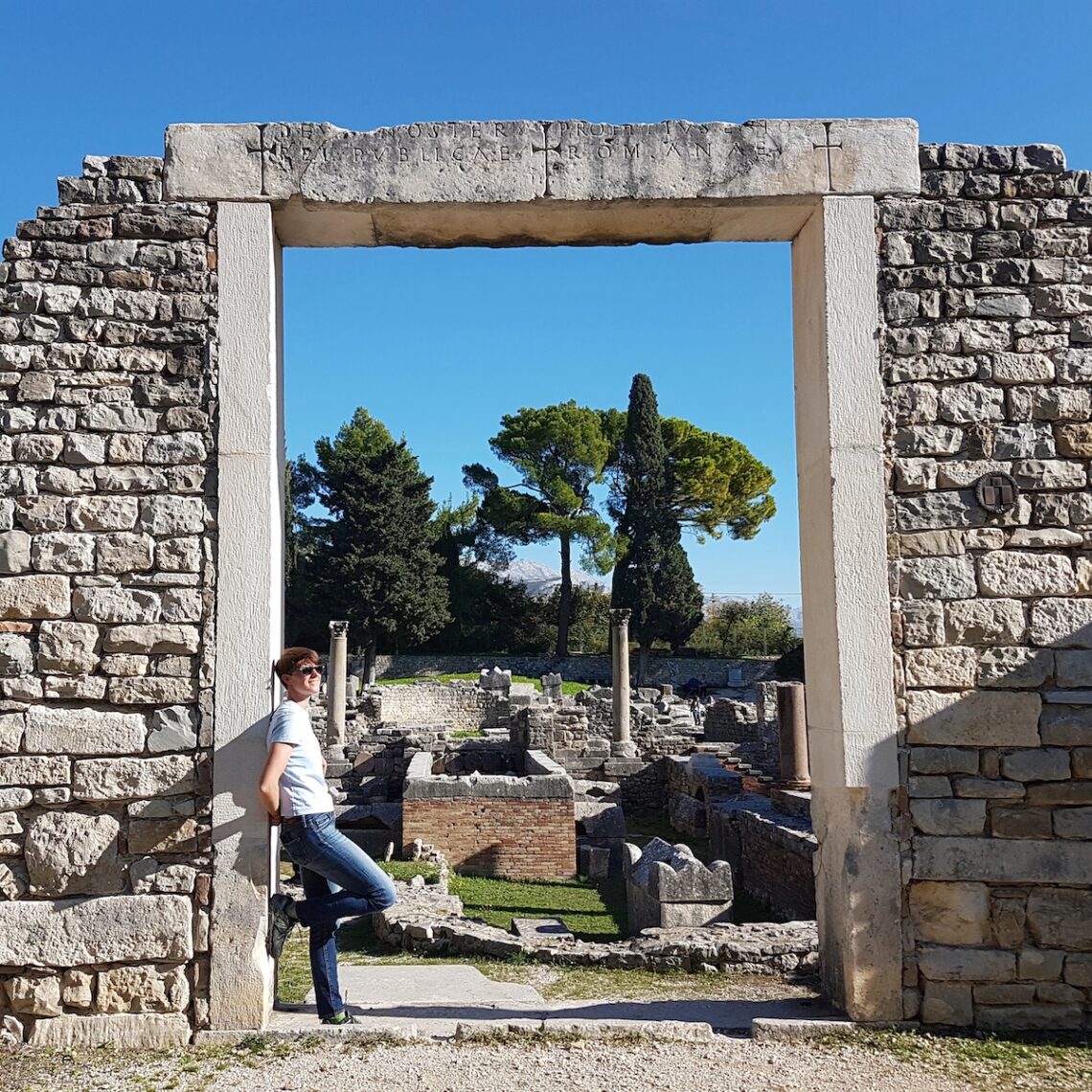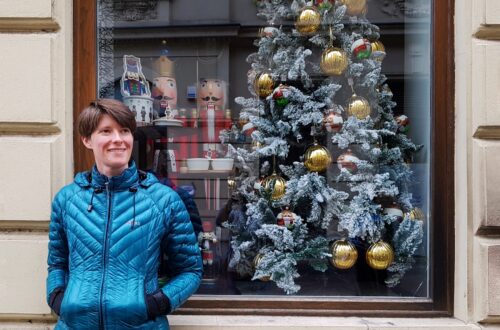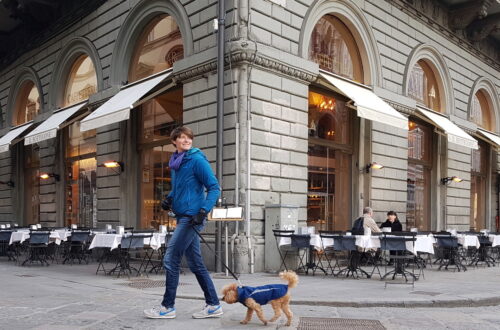
Cost of Living In Split
Our Early Retirement Lifestyle
We’ve been enjoying an almost perfect autumn here on the coast of Croatia. We started with a month in Dubrovnik, exploring the old city and enjoying hiking and some truly epic views. Then we drove for four hours from Dubrovik to Split along the coastal road. We had oceans on one side and mountains on the other and the highway basically to ourselves. We actually had to drive through Bosnia to get to Split but it was easy to pass through and no one cared to look at our passports.
Since then, we’ve been enjoying everything Split has to offer in November: warm, sunny days; lots of beaches; historic sights and a beautiful waterfront.
After a full month here in Split, we’re ready to provide the full rundown of our experiences and costs including accommodations, entertainment, dining out and more. We also have a head-to-head comparison between Dubrovnik and Split after spending equal time in each.
Accommodations
Fortunately there was a lot of availability in Airbnb, partially because of seasonality and partially because people are just not traveling these days. We found a spacious one bedroom we really like. It is modern and stylish with all the things we look for: a well-equipped kitchen with a dishwasher (always a bonus!); full-sized fridge; washing machine; a comfortable living room and our new favourite amenity: free Netflix. In fact, we’ve been switching our own Netflix subscription on and off depending on what’s available at each Airbnb.
What makes this apartment really great is the central location. It’s close to the green market where we go to buy fruits and vegetables. It’s close to the old town and the Riva promenade with it’s cafes and restaurants. And it’s close to the beach so we can easily head down to the water for a walk with our dogs.
With all these amenities and attractions, it wasn’t the lowest priced apartment on offer. But we were satisfied with the amount we paid, which was $1100.
Entertainment
Onto entertainment and activities for the month, which Split has in abundance. As usual, we enjoyed a mix of free and paid activities. For free activities, we enjoyed hanging out at our local beach. There is usually a game or two of picigin to watch, regardless of the temperature that day. This is a water game invented here in Split that involves a ball and five guys throwing themselves in water.
We also hiked up Marjan Park a number of times, which offers a great view of Split and kilometres of trails to walk or run or bike. And of course, there’s the waterfront promenade or Riva, which is a great place to have a coffee and enjoy the people watching.
Of course, Split’s Old Town and Diocletian’s Palace is free for endless wandering around. We chose to do a paid tour so we could understand the history of the palace and how the city of Split grew up around it. We also went to the gallery of Ivan Mestrovic, which has the most significant works from this 20th century Croatian sculptor and was the perfect place to spend a rainy afternoon.
Split is also a great base for excursions in the area. We rented a car on a few occasions and headed off to explore. Krka National Park was absolutely incredible and we saw more waterfalls there than we’ve ever seen in our entire lives. We went to Klis Fortress, which provides an incredible view of the entire area. And we poked around the extensive Roman ruins at Salona.
Our total spend on entertainment was $116, which also includes our monthly subscriptions.
Dining out
For dining out and takeaway, we really enjoyed trying a number of the Croatian classics. For takeaway, we tried a cevapi sandwich –basically elongated meatballs in a bun that was liberally spread with red pepper sauce and kaymak cheese.
We also tried a traditional kale pie that we picked up fresh from the market. And we had a huge box of grilled meats from a local restaurant. We also had a lot of fish and seafood, both grilled and fried.Finally, we tried some Croatian dishes that are very Italian influenced, like pasticada, which is a very hearty beef stew that comes with gnocchi.
We found that the food scene in Split is fairly international and sophisticated. We saw a few vegan restaurants and even had a poke bowl of fresh tuna. Our total spend on takeaway and dining out was $327.
Groceries
Of course, we still did plenty of home cooking as usual. We enjoyed getting our produce from the local green market since it seemed like most of the vendors were also the farmers. We really felt that we were contributing directly to the local economy.
For all other items, it seemed like there was a grocery store on every block. Overall the prices were better than Dubrovnik and comparable to what we experienced in Greece. Our total spend on groceries was $550.
Transportation
If you saw our video about our road trip in Northern Greece, you’ll notice that Gillian is the only one doing any driving. She’s the driver in our household and I’m the designated navigator slash snack provider. However, Gillian only drives automatic which has cost us quite a premium whenever we’ve rented cars in Europe. Until now!
In the spirit of self improvement and frugality, Gillian decided to take a driver’s lesson while we were here in Split so that she could finally, finally drive a manual car. In one lesson — which costs just $25 USD – she was able to get the hang of driving manual. And we’ve been saving a bundle on our car rentals ever since. This past month in Split, we rented a car a few times — at just $17 USD a pop — so that we could get out and enjoy the whole region.
Our total spend on local transportation was $170 USD. This also includes a one way car rental from Dubrovnik to Split — with an automatic car for $77 USD plus gas — and a few Uber rides.
We have other regular costs from our life on the road that we share every month. For fitness, instead of getting a gym membership like we used to, we’ve been running a few times a week and doing an at-home bodyweight workout for $0. Fitness is really important to us so we couldn’t resist checking out a local gym here in Split. But ultimately we just didn’t feel comfortable in an enclosed space with COVID rates on the rise.
Data is another regular cost, which came in at $12 USD this month. And for insurance we spent $140 USD on our international medical plan with Cigna Global, which you can find out more about in this video.
We always like to note what we don’t include in our cost of living videos: personal expenses like clothing or technology; any donations or gifts; and any costs related to our dogs.
Split vs Dubrovnik
Now let’s talk about how our experiences and costs in Split compared to our month in Dubrovnik. First, what they have in common: They are both cities on the Dalmatian coast of Croatia with beautiful historic centres and lots of beach access in and around town. They are also great jumping off points for visiting small towns in the region or setting off for a sail around the islands.
Looking just at Dubrovnik, we found that the historic centre truly majestic and has been just beautifully preserved. We can really appreciate why it’s such a huge tourist draw. Dubrovnik also offers good access to hiking. We could literally walk out of our Airbnb and within 15 minutes we were climbing up Srd mountain.
However, Dubrovik is ultimately a very small city so is more limited in terms of activities and entertainment for a longer stay. We also found that the restaurants are predominantly catering to tourists and are quite expensive. There were very few dining options for locals and, in fact, we only ever saw locals having coffee or drinks out.
Similarly to the restaurants, the Airbnbs are also more expensive than in Split. We managed to find quite an affordable apartment but keep in mind that we were there in the low season…during a pandemic…and it was a pretty small studio space. Our total spend in Dubrovnik was $2,328 USD.
As for Split, it also has a beautiful historic centre but there’s a lot more city that has grown up in and around it. Also, as the second largest city in Croatia, it’s much larger than Dubrovnik so there are more people and shops and restaurants and a lot more buzz.
Speaking of restaurants, there’s something for everyone at every price point, whether it’s a cheap takeaway sandwich or a fancy dinner out. We also found that there’s lots of choice for Airbnbs at lower prices than Dubrovnik. We actually paid more for our Airbnb in Split but we got a lot more space and in a better location.
In all, we spent $2,416 USD in Split, which was a little more than we spent in Dubrovnik but we also got a bigger apartment, more meals out and lots more excursions.
All amounts in USD
| Item | Budget |
| Accommodations: A stylish, one-bedroom apartment in a central location | $1,100 |
| Entertainment: Entrance for sites and attractions, a walking tour plus our monthly subscriptions | $116 |
| Dining Out & Takeaway: A meal out or takeaway a few times a week | $327 |
| Groceries: Most of our meals were made at home | $550 |
| Local Transportation: Car rentals and Ubers | $170 |
| Fitness: At-home workouts | $0 |
| Data: Small amount of data from global plan | $12 |
| Insurance: An essential for travel | $140 |
| Total | $2,416 |





6 Comments
Pingback:
Pingback:
Pingback:
Pingback:
Pingback:
Pingback: